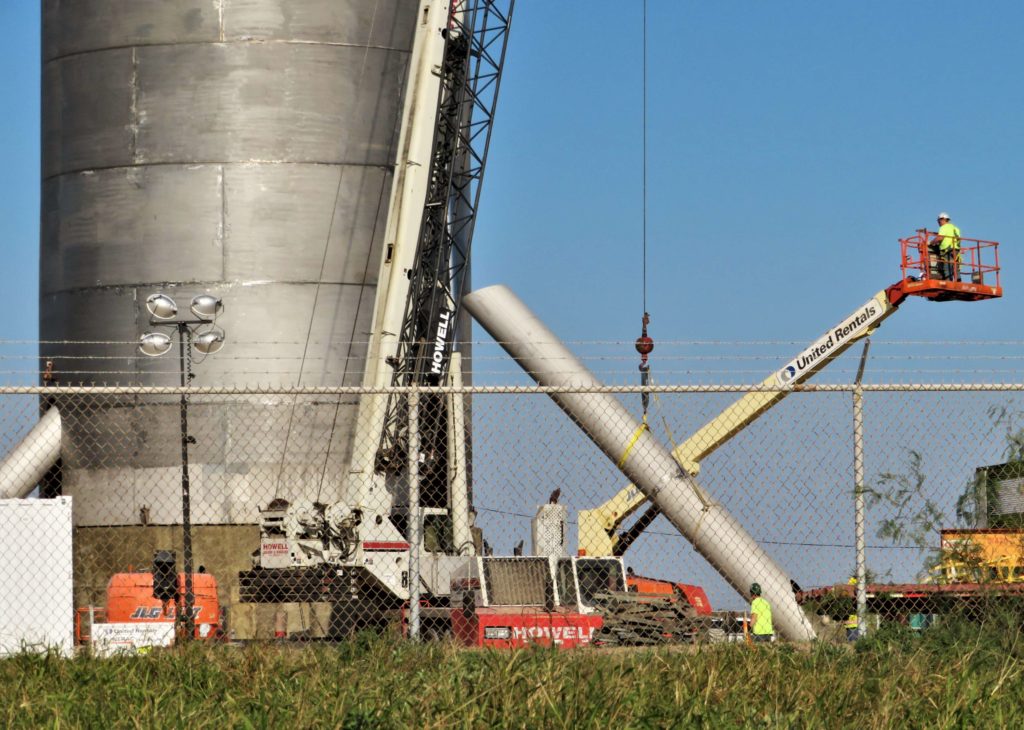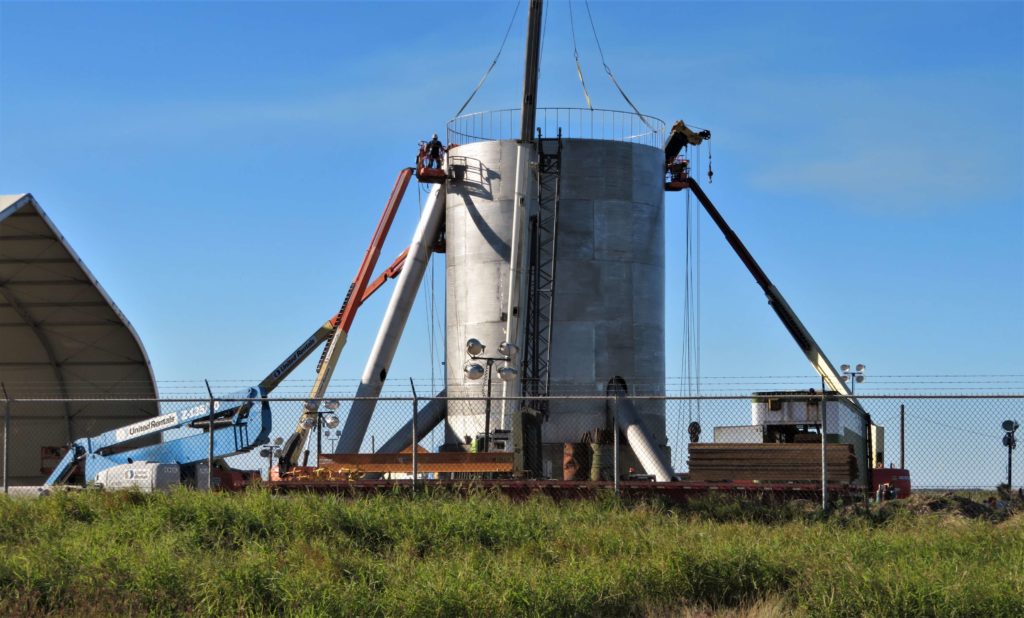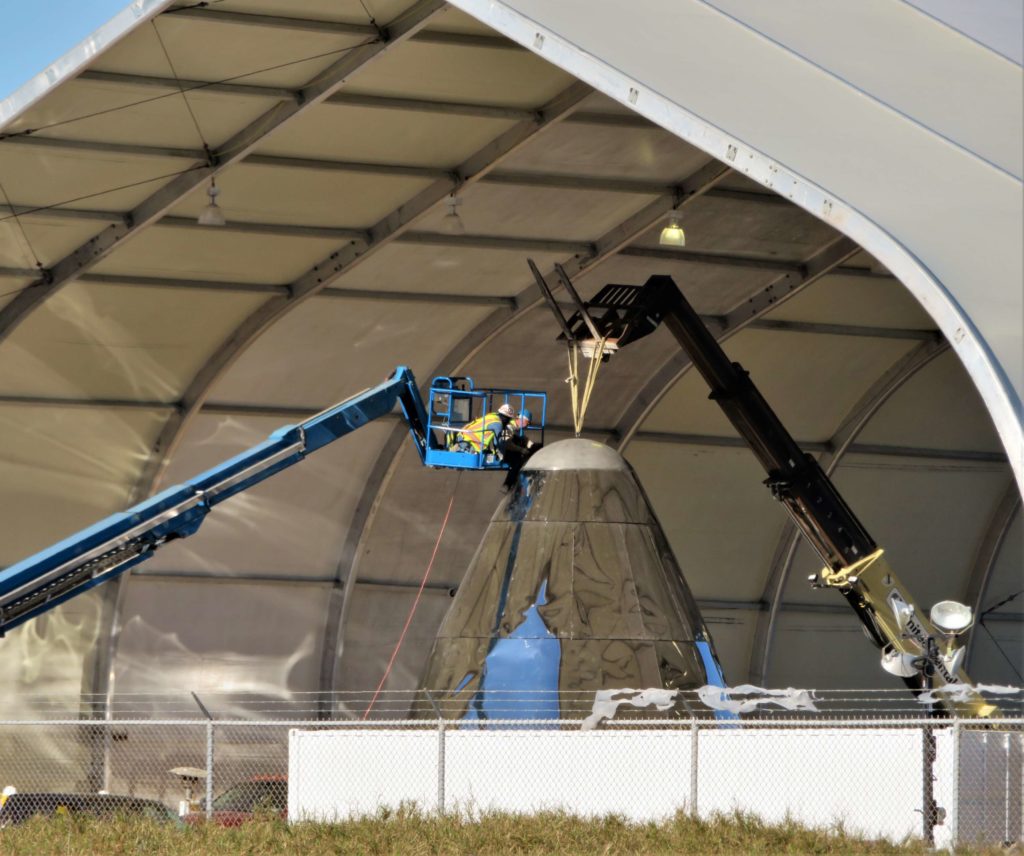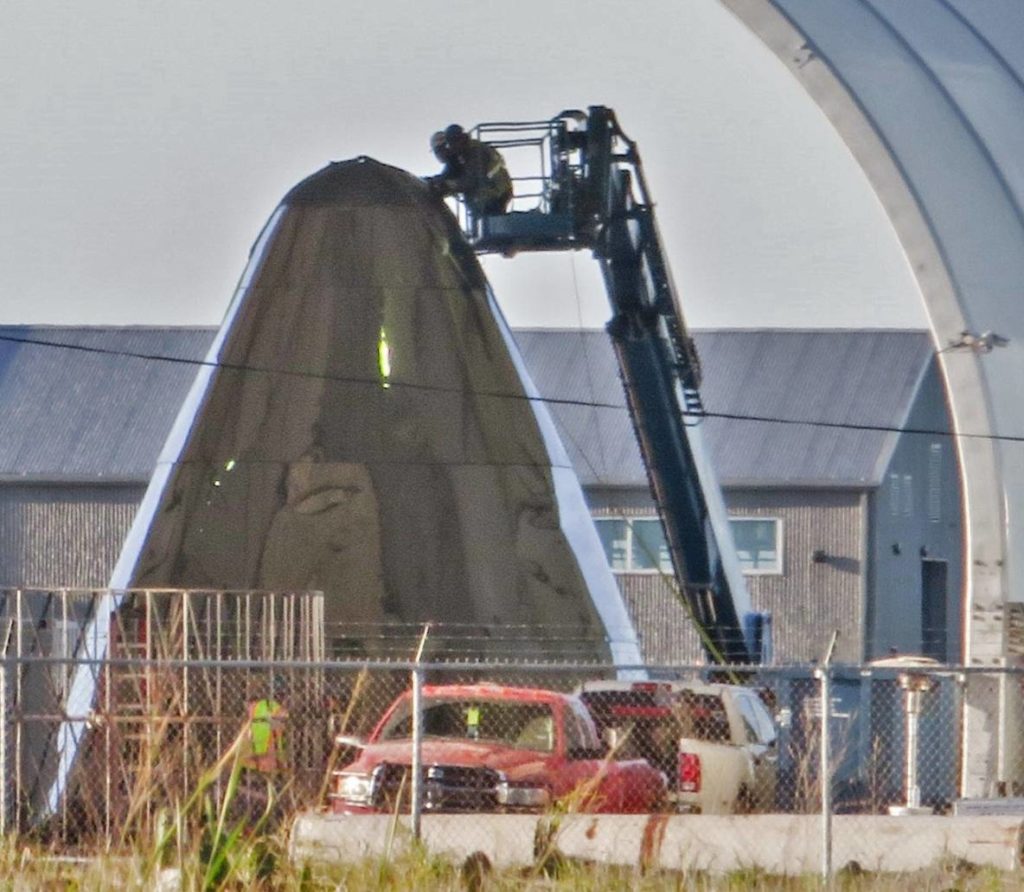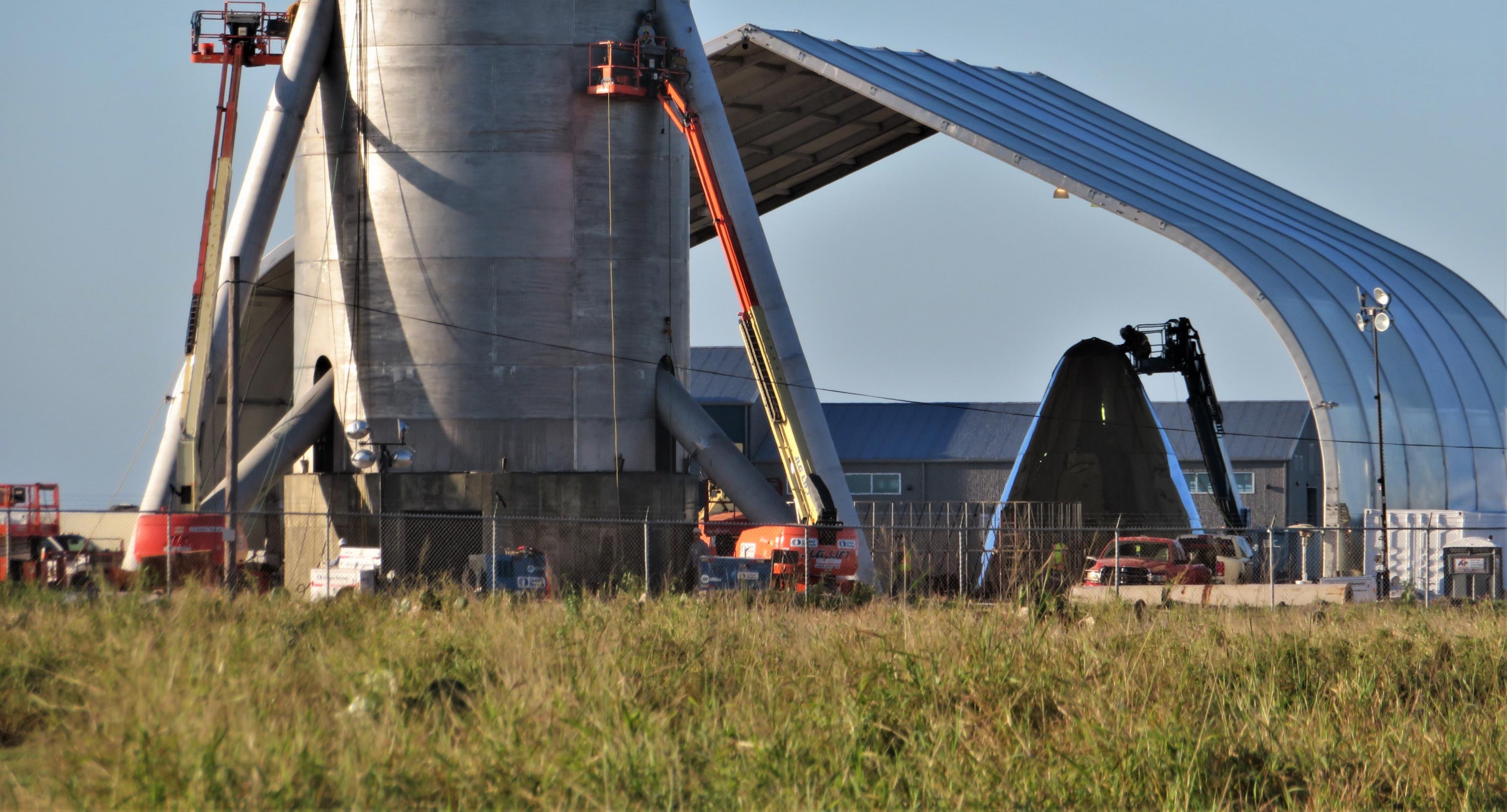

News
SpaceX CEO Elon Musk says Starship (BFS) hop tests could start in early 2019
SpaceX CEO Elon Musk has taken to Twitter to share an unexpected wealth of detail about the “radical” and largely unpublicized design changes the company’s Starship and Super Heavy (BFS & BFB) have undergone in 2018.
Beside information ranging from discussions of metallurgy to overall design philosophy and comparisons, the eccentric CEO also offered the most concrete target yet for the beginning of prototype spaceship (BFS/Starship) hop tests in South Texas – “March/April [2019]”.
I will do a full technical presentation of Starship after the test vehicle we’re building in Texas flies, so hopefully March/April
— Elon Musk (@elonmusk) December 22, 2018
On one hand, this expeditious new testing schedule – acknowledged by Musk himself to be “much sooner than expected” – is a thrilling prospect, given that it implies that a nearly full-scale prototype of Starship (or something vaguely approximating the spacecraft) could take its first baby steps into the air as early as the first quarter of 2019. On the other hand, however, this is an almost bafflingly large schedule change considering that SpaceX President and COO Gwynne Shotwell asserted that a prototype of BFS (now Starship) could begin “hopping” by late 2019, speaking in September 2018.
Shotwell: think we’ll be “hopping” the second stage of BFR (the BFS) late next year. #DARPA60
— Jeff Foust (@jeff_foust) September 6, 2018
Schedules (especially aerospace program schedules) do certainly tend to be chaotic and jumpy, but it’s almost inconceivable that any given project – regardless of the scope or scale – could wind up reaching completion nine months earlier than previously forecasted without suffering one or several dramatic compromises, typically involving lower-fidelity testing and prototypes or watered-down deliverables. It’s unclear if BFR has suffered the same fate, but – to put it lightly – the South Texas sight greeting the eyes of close followers of SpaceX’s BFR program is downright unbelievable.
BFWhat?!
Given the very recent and conspicuous additions of triangular appendages that look precisely like rudimentary fins and an obvious nose cone assembly, the only possible conclusion to draw from photos of SpaceX’s Boca Chica facilities taken in the last week or two is that the company (and/or contractors) are busy building something related to Starship. At least in these early stages, the… thing being built could be best described as what might come to mind if you asked an imaginative kid to build a full-scale sculpture of Tintin’s spaceship on a budget of maybe $500,000.
You got something to show us in Texas? pic.twitter.com/vBF0WwwIfF
— Robotbeat🗽 ➐ (@Robotbeat) December 22, 2018
More likely than not, this could be a case of things being more than they seem. To most, it may almost look like an elaborate prank, but that assumes that we know the full story and have a decent working understanding of aerospace prototyping. For the vast majority of us, that is simply not the case – what looks like a spade is probably not a spade.
At the end of the day, the most basic of observations – that this purported ‘Starship prototype’ will begin hop tests with extraordinarily powerful Raptor engines installed as few as three months from now – suggest that this spooky metal contraption will be used to conduct the most basic of Starship tests. As such, it will probably never travel much faster than Falcon 9’s Grasshopper and F9R predecessors, which tended to gently accelerate from the ground to as high as a kilometer or two before slowly heading back down for a powered landing.
- What now seem to be extremely rough fin outlines were welded to the main steel cylinder like giant metal straws. (bocachicagal – NASASpaceflight)
- ¯\_(ツ)_/¯ (bocachicagal – NASASpaceflight)
- SpaceX recovery technicians work on Falcon 9 with similar cherry-picker lifts, offering a sense of scale of the new Starship water tower. (Pauline Acalin)
- A conspicuous nosecone appears to have arisen inside SpaceX’s new Boca Chica tent, adjacent to what looks like a water tower with tube legs. (bocachicagal – NASASpaceflight)
- (bocachicagal – NASASpaceflight)
Given that SpaceX has already refined this complex and challenging task to a reliable science with Falcon 9 and Merlin 1D, it’s unclear why a very similar test campaign would be of serious value to the company without simultaneously testing full-fidelity control surfaces (fins), exotic new stainless steel propellant tank technologies, and more. Perhaps SpaceX just really wants to ensure that Starship will be capable of landing and taking off from an unprepared and angled surface of the type it could (will?) experience on Mars. Maybe the company simply wants to have a bare-minimum flying platform capable of testing and refining multi-engine configurations of Raptor.
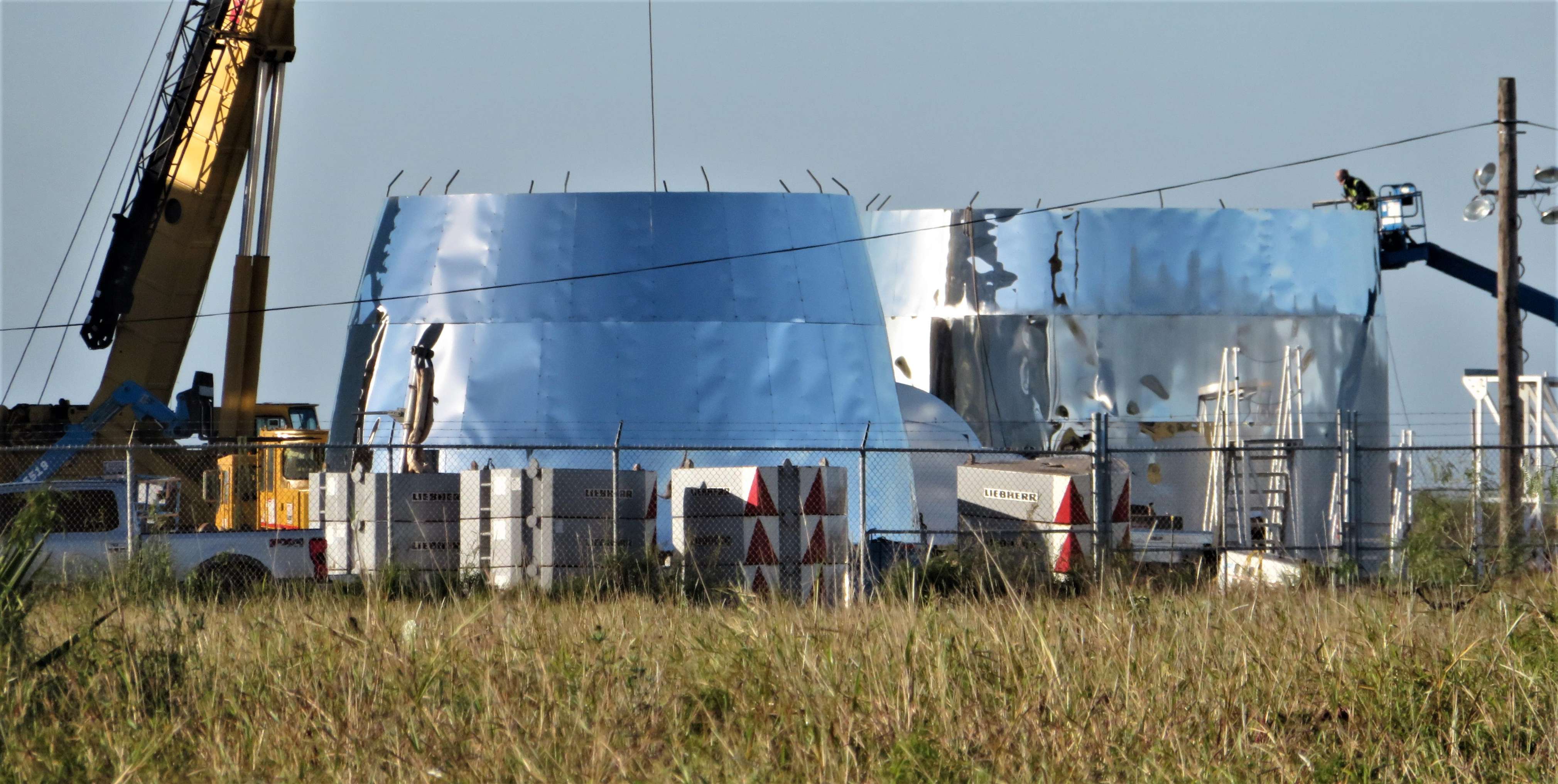
All that can be said for sure at the moment is that the public simply does not have the full story to explain the moderately shocking activity going on in Boca Chica. Musk did state that he would provide another technical update on the status of Starship and the BFR program as a whole in the first half of 2019, but only after the first Starship hopper flights have begun. It would seem that those on the sidelines will simply have to wallow in confusion and wild speculation for another ~3-4 months at minimum, hopefully only going moderately insane as a result.
In the meantime, copious thanks are owed to NASASpaceflight members bocachicagal and Nomadd for their relentless and thorough coverage of SpaceX’s activities in the obscure far south of the Texan coast, as well as their courteous permission for media outlets like Teslarati to republish their photos. Cheers!
For prompt updates, on-the-ground perspectives, and unique glimpses of SpaceX’s rocket recovery fleet check out our brand new LaunchPad and LandingZone newsletters!
News
Tesla launches in India with Model Y, showing pricing will be biggest challenge
Tesla finally got its Model Y launched in India, but it will surely come at a price for consumers.

Tesla has officially launched in India following years of delays, as it brought its Model Y to the market for the first time on Tuesday.
However, the launch showed that pricing is going to be its biggest challenge. The all-electric Model Y is priced significantly higher than in other major markets in which Tesla operates.
On Tuesday, Tesla’s Model Y went up for sale for 59,89,000 rupees for the Rear-Wheel Drive configuration, while the Long Range Rear-Wheel Drive was priced at 67,89,000.
This equates to $69,686 for the RWD and $78,994 for the Long Range RWD, a substantial markup compared to what these cars sell for in the United States.
🚨 Here’s the difference in price for the Tesla Model Y in the U.S. compared to India.
🚨 59,89,000 is $69,686
🚨 67,89,000 is $78,994 pic.twitter.com/7EUzyWLcED— TESLARATI (@Teslarati) July 15, 2025
Deliveries are currently scheduled for the third quarter, and it will be interesting to see how many units they can sell in the market at this price point.
The price includes tariffs and additional fees that are applied by the Indian government, which has aimed to work with foreign automakers to come to terms on lower duties that increase vehicle cost.
Tesla Model Y seen testing under wraps in India ahead of launch
There is a chance that these duties will be removed, which would create a more stable and affordable pricing model for Tesla in the future. President Trump and Indian Prime Minister Narendra Modi continue to iron out those details.
Maharashtra Chief Minister Devendra Fadnavis said to reporters outside the company’s new outlet in the region (via Reuters):
“In the future, we wish to see R&D and manufacturing done in India, and I am sure at an appropriate stage, Tesla will think about it.”
It appears to be eerily similar to the same “game of chicken” Tesla played with Indian government officials for the past few years. Tesla has always wanted to enter India, but was unable to do so due to these import duties.
India wanted Tesla to commit to building a Gigafactory in the country, but Tesla wanted to test demand first.
It seems this could be that demand test, and the duties are going to have a significant impact on what demand will actually be.
Elon Musk
Tesla ups Robotaxi fare price to another comical figure with service area expansion
Tesla upped its fare price for a Robotaxi ride from $4.20 to, you guessed it, $6.90.

Tesla has upped its fare price for the Robotaxi platform in Austin for the first time since its launch on June 22. The increase came on the same day that Tesla expanded its Service Area for the Robotaxi ride-hailing service, offering rides to a broader portion of the city.
The price is up from $4.20, a figure that many Tesla fans will find amusing, considering CEO Elon Musk has used that number, as well as ’69,’ as a light-hearted attempt at comedy over the past several years.
Musk confirmed yesterday that Tesla would up the price per ride from that $4.20 point to $6.90. Are we really surprised that is what the company decided on, as the expansion of the Service Area also took effect on Monday?
But the price is now a princely $6.90, as foretold in the prophecy 😂
— Elon Musk (@elonmusk) July 14, 2025
The Service Area expansion was also somewhat of a joke too, especially considering the shape of the new region where the driverless service can travel.
I wrote yesterday about how it might be funny, but in reality, it is more of a message to competitors that Tesla can expand in Austin wherever it wants at any time.
Tesla’s Robotaxi expansion wasn’t a joke, it was a warning to competitors
It was only a matter of time before the Robotaxi platform would subject riders to a higher, flat fee for a ride. This is primarily due to two reasons: the size of the access program is increasing, and, more importantly, the service area is expanding in size.
Tesla has already surpassed Waymo in Austin in terms of its service area, which is roughly five square miles larger. Waymo launched driverless rides to the public back in March, while Tesla’s just became available to a small group in June. Tesla has already expanded it, allowing new members to hail a ride from a driverless Model Y nearly every day.
The Robotaxi app is also becoming more robust as Tesla is adding new features with updates. It has already been updated on two occasions, with the most recent improvements being rolled out yesterday.
Tesla updates Robotaxi app with several big changes, including wider service area
News
Tesla Model Y and Model 3 dominate U.S. EV sales despite headwinds
Tesla’s two mainstream vehicles accounted for more than 40% of all EVs sold in the United States in Q2 2025.

Tesla’s Model Y and Model 3 remained the top-selling electric vehicles in the U.S. during Q2 2025, even as the broader EV market dipped 6.3% year-over-year.
The Model Y logged 86,120 units sold, followed by the Model 3 at 48,803. This means that Tesla’s two mainstream vehicles accounted for 43% of all EVs sold in the United States during the second quarter, as per data from Cox Automotive.
Tesla leads amid tax credit uncertainty and a tough first half
Tesla’s performance in Q2 is notable given a series of hurdles earlier in the year. The company temporarily paused Model Y deliveries in Q1 as it transitioned to the production of the new Model Y, and its retail presence was hit by protests and vandalism tied to political backlash against CEO Elon Musk. The fallout carried into Q2, yet Tesla’s two mass-market vehicles still outsold the next eight EVs combined.
Q2 marked just the third-ever YoY decline in quarterly EV sales, totaling 310,839 units. Electric vehicle sales, however, were still up 4.9% from Q1 and reached a record 607,089 units in the first half of 2025. Analysts also expect a surge in Q3 as buyers rush to qualify for federal EV tax credits before they expire on October 1, Cox Automotive noted in a post.
Legacy rivals gain ground, but Tesla holds its commanding lead
General Motors more than doubled its EV volume in the first half of 2025, selling over 78,000 units and boosting its EV market share to 12.9%. Chevrolet became the second-best-selling EV brand, pushing GM past Ford and Hyundai. Tesla, however, still retained a commanding 44.7% electric vehicle market share despite a 12% drop in in Q2 revenue, following a decline of almost 9% in Q1.
Incentives reached record highs in Q2, averaging 14.8% of transaction prices, roughly $8,500 per vehicle. As government support winds down, the used EV market is also gaining momentum, with over 100,000 used EVs sold in Q2.
Q2 2025 Kelley Blue Book EV Sales Report by Simon Alvarez on Scribd
-

 News3 days ago
News3 days agoTesla debuts hands-free Grok AI with update 2025.26: What you need to know
-

 Elon Musk1 week ago
Elon Musk1 week agoElon Musk confirms Grok 4 launch on July 9 with livestream event
-

 Elon Musk6 days ago
Elon Musk6 days agoxAI launches Grok 4 with new $300/month SuperGrok Heavy subscription
-

 News2 weeks ago
News2 weeks agoTesla Model 3 ranks as the safest new car in Europe for 2025, per Euro NCAP tests
-

 Elon Musk2 weeks ago
Elon Musk2 weeks agoxAI’s Memphis data center receives air permit despite community criticism
-

 News5 days ago
News5 days agoTesla begins Robotaxi certification push in Arizona: report
-

 Elon Musk2 weeks ago
Elon Musk2 weeks agoTesla reveals it is using AI to make factories more sustainable: here’s how
-

 Elon Musk2 weeks ago
Elon Musk2 weeks agoTesla scrambles after Musk sidekick exit, CEO takes over sales

